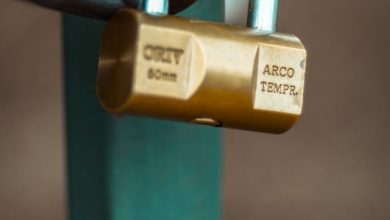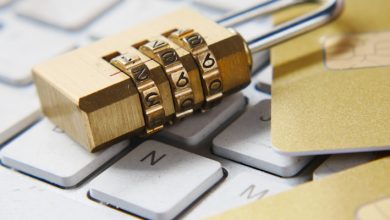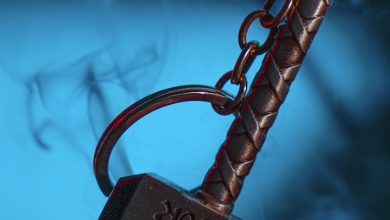How to Backup Your Crypto Wallet: A Step-by-Step Guide

- Understanding the importance of backing up your crypto wallet
- Choosing the right backup method for your crypto wallet
- Step-by-step guide to backing up your crypto wallet securely
- Tips for storing your backup in a safe and secure location
- Testing your backup to ensure it works when needed
- What to do in case of a lost or compromised backup
Understanding the importance of backing up your crypto wallet
Backing up your crypto wallet is crucial to ensure the safety and security of your digital assets. Many people underestimate the importance of this step, but failing to backup your wallet can result in irreversible loss of funds. By creating a backup of your wallet, you can protect yourself against potential risks such as theft, hardware failure, and human error.
Backing up your crypto wallet involves making a copy of your private keys or seed phrase and storing it in a secure location. This backup will allow you to recover your funds in case your wallet is lost, stolen, or damaged. Without a backup, you may lose access to your funds permanently, which can be a devastating experience for any crypto investor.
It is essential to understand that the security of your crypto wallet is ultimately your responsibility. By taking the necessary precautions to backup your wallet, you can mitigate the risks associated with storing and managing digital assets. Remember, prevention is always better than cure when it comes to safeguarding your cryptocurrencies.
Choosing the right backup method for your crypto wallet
When it comes to backing up your crypto wallet, it is crucial to choose the right method to ensure the security and accessibility of your funds. There are several options available, each with its own set of advantages and considerations.
The first option is to use a hardware wallet, which is a physical device that stores your private keys offline. This is considered one of the most secure methods as it is not connected to the internet, making it less vulnerable to hacking. However, hardware wallets can be expensive and may not be as convenient for frequent transactions.
Another option is to use a paper wallet, which involves printing out your private keys and storing them in a secure location. While this method is secure from online threats, it is susceptible to physical damage or loss. It is essential to keep your paper wallet in a safe place where only you can access it.
Alternatively, you can choose to backup your wallet using a digital method, such as a USB drive or an encrypted file stored on the cloud. This provides a balance between security and convenience, as long as you take necessary precautions to protect your digital backup from unauthorized access.
Ultimately, the best backup method for your crypto wallet will depend on your individual needs and preferences. It is recommended to use a combination of different methods to ensure redundancy and maximize the security of your funds. Regardless of the method you choose, it is essential to regularly update your backups and test their accessibility to avoid any potential loss of funds.
Step-by-step guide to backing up your crypto wallet securely
Backing up your crypto wallet is essential to ensure that you do not lose access to your funds in case of a device failure or loss. Follow these steps to securely backup your crypto wallet:
- Choose the right backup method: Before you start the backup process, make sure you choose a secure method such as writing down your seed phrase on a piece of paper, using a hardware wallet, or encrypting your wallet file.
- Write down your seed phrase: If you are using a software wallet, you will be given a seed phrase when you first set it up. Write down this seed phrase on a piece of paper and store it in a safe place. Do not store it digitally as it could be vulnerable to hacking.
- Use a hardware wallet: Hardware wallets are considered one of the most secure ways to backup your crypto wallet. These devices store your private keys offline and are protected from online threats.
- Encrypt your wallet file: If you are using a desktop or mobile wallet, you can encrypt your wallet file with a strong password. Make sure to use a unique and complex password that is not easily guessable.
- Test your backup: Once you have backed up your wallet, it is important to test it to ensure that you can recover your funds if needed. Try restoring your wallet using the seed phrase or backup file to make sure everything is working correctly.
Tips for storing your backup in a safe and secure location
When it comes to storing your backup of your crypto wallet, it is crucial to choose a safe and secure location. Here are some tips to help you ensure that your backup is protected:
- Consider using a safe deposit box at a bank to store your backup. This provides an extra layer of security as it is typically fireproof and protected by the bank’s security measures.
- Another option is to store your backup in a waterproof and fireproof safe at home. Make sure to choose a safe that is both secure and easily accessible in case you need to retrieve your backup quickly.
- If you prefer a digital option, consider using a secure cloud storage service to store your backup. Make sure to encrypt your backup file before uploading it to the cloud to ensure that it remains private and secure.
- Regardless of where you choose to store your backup, it is important to keep multiple copies in different locations. This way, if one copy is compromised or lost, you will still have access to your backup.
By following these tips and choosing a safe and secure location for your backup, you can have peace of mind knowing that your crypto wallet is protected in case of any unforeseen circumstances.
Testing your backup to ensure it works when needed
Backing up your crypto wallet is a crucial step in protecting your digital assets. However, simply creating a backup is not enough. It is essential to regularly test your backup to ensure it will work when needed.
One way to test your backup is to restore it on a different device. This will help you verify that all the necessary information has been successfully backed up and can be accessed in case of an emergency. Additionally, you can try sending a small amount of cryptocurrency to your restored wallet to confirm that it is fully functional.
Another method to test your backup is to simulate a data loss scenario. You can intentionally delete your wallet files and then attempt to recover them using your backup. This will give you a good indication of whether your backup process is effective and reliable.
Regularly testing your backup is a proactive measure that can save you from a potential disaster in the future. By taking the time to ensure that your backup works as intended, you can have peace of mind knowing that your crypto assets are safe and secure.
What to do in case of a lost or compromised backup
If you find yourself in a situation where your backup for your crypto wallet is lost or compromised, it is crucial to act quickly and carefully to prevent any potential loss of funds. Here are some steps you can take to address this issue:
1. **Assess the Situation:** The first thing you should do is assess the extent of the loss or compromise. Determine whether the backup was simply misplaced or if it was stolen or accessed by unauthorized individuals.
2. **Secure Your Funds:** If you suspect that your backup has been compromised, it is essential to secure your funds immediately. Transfer your funds to a new wallet or exchange to prevent any further loss.
3. **Change Your Passwords:** To prevent any unauthorized access to your wallet, change all passwords associated with your crypto accounts. This includes your wallet password, exchange password, and any other related accounts.
4. **Contact Support:** Reach out to the customer support team of your wallet provider or exchange platform. Inform them of the situation and follow their guidance on how to proceed.
5. **Monitor Your Accounts:** Keep a close eye on your accounts and transactions to ensure that no unauthorized activity is taking place. Report any suspicious transactions to the appropriate authorities.
6. **Recover Your Backup:** If possible, try to recover your lost or compromised backup. Follow the instructions provided by your wallet provider on how to do this.
7. **Learn from the Experience:** Use this situation as a learning experience to improve your security practices. Consider implementing additional security measures such as two-factor authentication or hardware wallets.
By following these steps, you can effectively address a lost or compromised backup for your crypto wallet and minimize any potential risks to your funds. Remember to stay vigilant and proactive in safeguarding your assets in the future.



